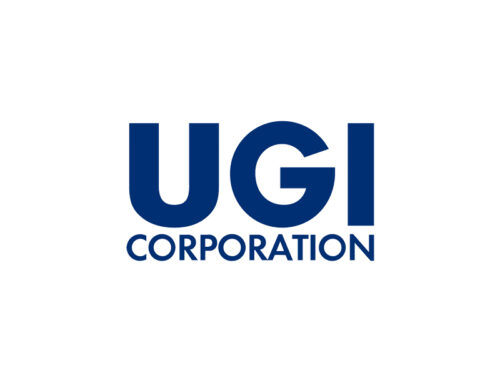Every day, food manufacturers across America face a persistent challenge. Packaged food products that can’t be sold — whether due to expiration dates, damaged packaging, or quality issues — create a disposal headache with few good solutions. Most of this valuable material ends up in landfills, where it generates harmful methane emissions while its energy potential goes completely wasted.
We at Synthica Energy have developed a different approach. By employing advanced depackaging technology integrated with anaerobic digestion facilities, we’re unlocking the energy content trapped inside packaged food waste, converting it into renewable natural gas while solving a critical disposal problem for manufacturers.
The Packaged Food Disposal Dilemma
The challenge facing food manufacturers is multifaceted. Packaged food waste — products still contained in plastic, metal, or cardboard packaging — creates disposal complications that few facilities can handle properly. Without viable alternatives, most manufacturers default to landfilling.
This approach creates several problems. First, it prevents the recovery of valuable materials like aluminum from cans. Second, it makes sustainability goals nearly impossible to achieve. Third, it’s extremely cost-inefficient, with landfills typically charging per load rather than by actual weight, regardless of how bulky the material is.
For frozen or cold storage products, the situation becomes even more pressing. These expired products occupy valuable warehouse space and must be removed quickly — a significant challenge when existing disposal options are either capacity-limited or geographically distant.
Breaking Through the Packaging Barrier
Our solution begins with advanced depackaging equipment specially designed to handle diverse packaging materials. The technology employs water along with mechanical components including pulpers, screens, and augers that physically break open packaging to release the organic content inside.
This approach allows us to process products still in their original packaging — typically plastic bags within cardboard boxes — directly off the pallets they arrive on if needed. The system achieves remarkable efficiency, extracting up to 99% of the food content from its packaging.
Traditionally, packaged food waste wasn’t processed at all. It was simply thrown away. With our depackaging systems feeding into anaerobic digesters, we transform this waste stream into Renewable Natural Gas (RNG), creating value from what was previously considered garbage.
Environmental Impact By Design
The environmental benefits are substantial. In landfills, when new wastes are added, methane — a greenhouse gas approximately 25 times more potent than CO2 — escapes into the atmosphere. Even landfills with methane capture systems typically collect only a portion of these emissions.
In contrast, our anaerobic digestion process takes place in sealed digester vessels that capture the methane produced. This prevents these harmful emissions from reaching the atmosphere while simultaneously producing Renewable Natural Gas that can replace fossil fuels.
For manufacturers with sustainability commitments, this process provides a double benefit: avoiding the negative environmental impact of landfilling while contributing to renewable energy production.
Economic Advantages Beyond Disposal
The economic case for depackaging and anaerobic digestion is equally compelling. Unlike many disposal facilities that charge per load regardless of content density, we charge by actual tonnage. This immediately benefits manufacturers whose waste streams include bulky packaging.
Material recovery provides additional value. We can often recycle aluminum from cans, creating a more comprehensive waste management solution compared to landfills (few people realize the huge volume of aluminum cans that are unfortuanately still discarded in landfills).
Location creates perhaps the most significant cost advantage. Our facilities are strategically positioned near urban manufacturing centers, dramatically reducing transportation costs compared to distant disposal sites. One organic food manufacturer in Cincinnati previously shipped their waste more than 12 hours away to the nearest possible sustainable outlet. After switching to our nearby Synthica St. Bernard facility, they eliminated 90% of their hauling costs.
For high-strength waste streams that composters, municipal treatment plants, and farmers can’t handle, our anaerobic digestion technology creates additional value by recovering energy content. This allows us to charge lower fees than other disposal outlets, passing savings on to manufacturers while maintaining profitability.
We also provide predictable pricing models with scheduled cost increases known at contract signing — eliminating the surprise fees and surcharges common with landfill disposal.
Automation Eliminates the Labor Equation
One of the most challenging aspects of handling packaged products is the labor cost. Manually opening each package to extract food materials quickly becomes cost-prohibitive.
Our automated depackaging machinery eliminates this constraint. The system efficiently processes products with multiple packaging layers — imagine cans inside boxes, all wrapped in packaging film — without requiring manual intervention. This automation dramatically reduces labor requirements while still delivering clean feedstock for our digesters.
Beyond Current Technology
Looking ahead, several industry trends point toward increased adoption of depackaging and anaerobic digestion technologies. Tightening regulations will make traditional land application of food waste increasingly difficult. Landfill capacity constraints will drive disposal costs higher. Both factors will make sustainable alternatives like ours increasingly attractive from both environmental and economic perspectives.
We’re positioning Synthica Energy to lead in this evolving landscape by building large-scale facilities capable of processing diverse organic waste streams into maximum amounts of renewable natural gas. Our plants currently under construction in Cincinnati, OH, Rome, GA and San Antonio, TX represent the next generation of this approach.
Challenging Common Misconceptions
Many food manufacturers still harbor misconceptions about anaerobic digestion technology. Some believe digesters are unreliable, based on experiences with older systems that weren’t built with sufficiently robust technologies and odor control measures.
Our approach addresses these concerns directly. We’re building Fortune 500-quality digestion facilities that operate reliably for our customers, with industrial-grade systems designed for consistent performance.
Another common misconception is that digesters can only process simple organic materials such as dairy waste. As described, our systems are engineered to handle high-strength waste streams as well as packaged products, meaning there are very few organic materials we cannot process effectively.
Starting Your Evaluation
For manufacturers exploring alternatives to landfilling packaged food waste, understanding the true cost structure is essential. Landfill fees for packaged products often include hidden costs — minimum tonnage requirements per load, fuel surcharges, and other add-ons that significantly increase the actual cost of disposal.
We recommend conducting a detailed analysis of your waste generation patterns and current disposal costs, including labor and transportation. Many manufacturers are surprised to discover how much they’re actually spending on waste disposal when all factors are considered.
By understanding your true tonnage generation and mapping potential hauling savings based on proximity to our facilities, you can make an informed decision about the most cost-effective and environmentally responsible approach to packaged food waste disposal.
The energy trapped inside your packaged food waste represents both an environmental liability and an economic opportunity. By employing advanced depackaging technology coupled with anaerobic digestion, we’re helping manufacturers transform this challenge into renewable energy while reducing costs and achieving sustainability goals.




